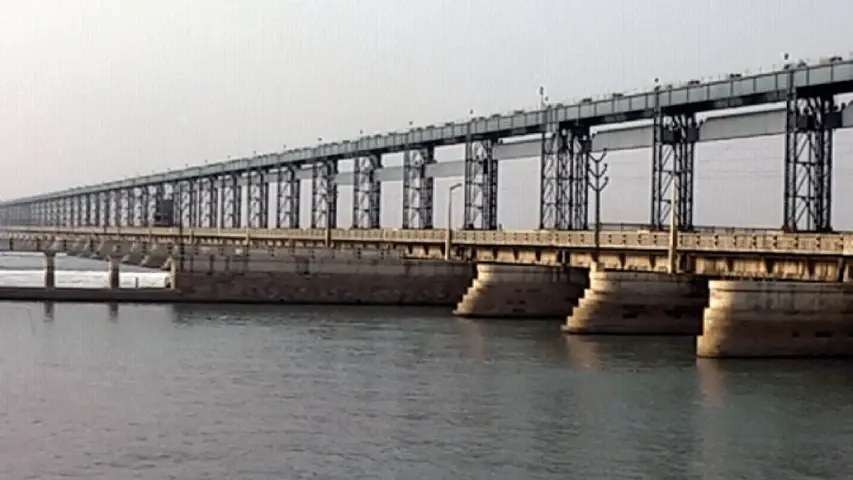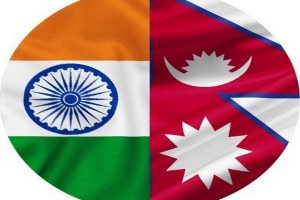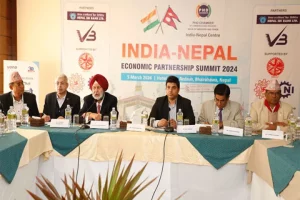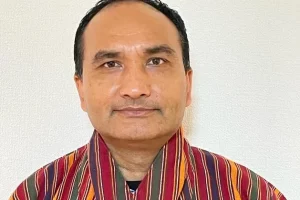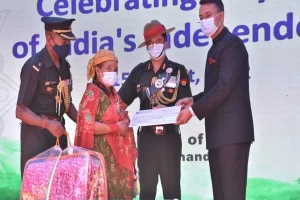Kathmandu: By agreeing to reduce the height of the proposed Sapta Koshi High Dam, Nepal and India may of have allayed local fears about inundation from the project.
Locals in eastern Nepal have been long protesting against the proposed project as they fear large scale flooding of human settlement as well as arable lands by the project.
During the 17th meeting of the Nepal-India Joint Team of Experts established to study the Saptakoshi High Dam Multipurpose Project held in eastern Biratnagar town of Nepal on October 9-11, the two countries agreed to reduce the height of the dam and change the location of the re-regulating dam, said the Ministry of Energy, Water Resources and Irrigation in a statement.
“We reached an agreement to reduce the height of the dam to 304.8 metres from earlier proposed around 337 metres,” Chiranjeevi Chataut, director general of the Department of Electricity Development, who led the Nepali team, told India Narrative. “Reduction of dam height will decrease the inundation area upstream of the dam allying the inundation fears of many people.”
He said that the shrinking height of the dam means the generation capacity of the proposed power plant will also be reduced. “Capacity of the proposed hydropower plant will be reduced to 2,200-2,300 MW from the earlier proposed 3,000MW,” Chataut said.
Likewise, according to the ministry’s statement, the two sides also agreed to relocate the proposed re-regulation barrage around 4km upstream from earlier proposed location at Sisauli, Udayapur district, as per the latest meeting.
“The plan to dig two large canals for irrigation facility in India from re-regulating dam has also been shelved to minimise loss of Nepal’s fertile lowlands in Tarai,” Chatuat said adding that a study would however be carried out how to irrigate more Nepali lands following construction of the high dam.
The earlier proposal was to irrigate 546,00 hectares in Nepal and 976,000 hectares in India.
According to the ministry, the two sides agreed to prepare a detailed project report (DPR) of the high dam project within 30 months and the DPR will focus on geology, environment impact assessment, rehabilitation and resettlement and flood benefits.
Such a decision of the bilateral meeting has come at a time when a joint project office set up at Biratnagar has failed to carry out any field works such as drilling, hydrological study, and environment impact assessment of the project multipurpose project amid intense local protest.
To address the local protest, Nepal had been proposing to shrink the dam height for a long time to which the Indian side finally agreed, according to Nepali officials. The trans-boundary Koshi river, which is known as ‘Sorrow of Bihar,’ has been causing large inundation in the Indian state every year. Besides flood control, New Delhi also wants to take irrigation facilities in India from the river.
Nepali experts also lauded the latest agreement reached between two sides as a positive development that could help create a conducive environment for the joint office to carry out its works.
Anup Upadhyay, former energy, and water resource secretary of Nepal government told the India Narrative that it was the sensible decision on the part of both sides as it would reduce inundation of fertile Nepali land as well as any risk of induction of hydropower plants upstream of the dam.
Several hydropower plants are being developed or planned in the tributary rivers of Saptakoshi. For example, 756MW Tamor Storage Hydroelectric Project has been planned on the Tamor river, one of the tributary rivers of Saptakoshi while the 635MW Dudhkoshi Hydropower Project is also in the pipeline. Nepal and Bangladesh have agreed in principle to develop the 683MW Sunkoshi 3 Hydropower Project in the Sunkoshi River, another tributary river.
Apart from the hydropower projects, Sunkoshi Marin Diversion Multi-Purpose Project, an irrigation project, has also been planned upstream of the proposed dam site.
“There is no logic in affecting these power and irrigation plants by not reducing the dam height,” said Upadhyay.
Nepali officials say these plants upstream of the proposed dam, would help regulate the water in Saptakoshi river, requiring no high dam as tall as initially proposed.
Upadhyay said that following the latest agreement, both sides are required to convince the local people to let the joint field office continue its work. “If a proper compensation package is announced, I think the locals will not be adverse to construction of the high dam,” he said.
Some stakeholders and activists are against the proposed high dam project particularly for two reasons—whether the project has been proposed for the benefit of Nepal or India and whether such high dams that could affect the fertile land, environment, and indigenous population, should be built.
“The project is mainly aimed to benefit India rather than Nepal,” Surya Nath Upadhyay, former water resource secretary of Nepal, told India Narrative.
Upadhyay, who also worked as member of Eminent Persons Group formed by Nepal and India to address the irritants of bilateral relations, said that he has been opposing the project for its little benefit to Nepal than India. “The promises made while building the existing Koshi barrage were not fulfilled and there is serious doubt whether promises of benefit to Nepal from the proposed high dam would be delivered,” he said.
But Anup Upadhyay, former energy, and water resources secretary, said that improvement has been made to benefit more to Nepal but convincing the Nepali public would be a tough task about the benefit given the persistent past protests.
“It is necessary to launch a public hearing about the project,” said Upadhaya. “Political leadership should also be taken into confidence following the latest agreement to save the project from being politicised.”
Also Read: Nepal, India to continue marathon for cementing giant Pancheshwar hydro-project






